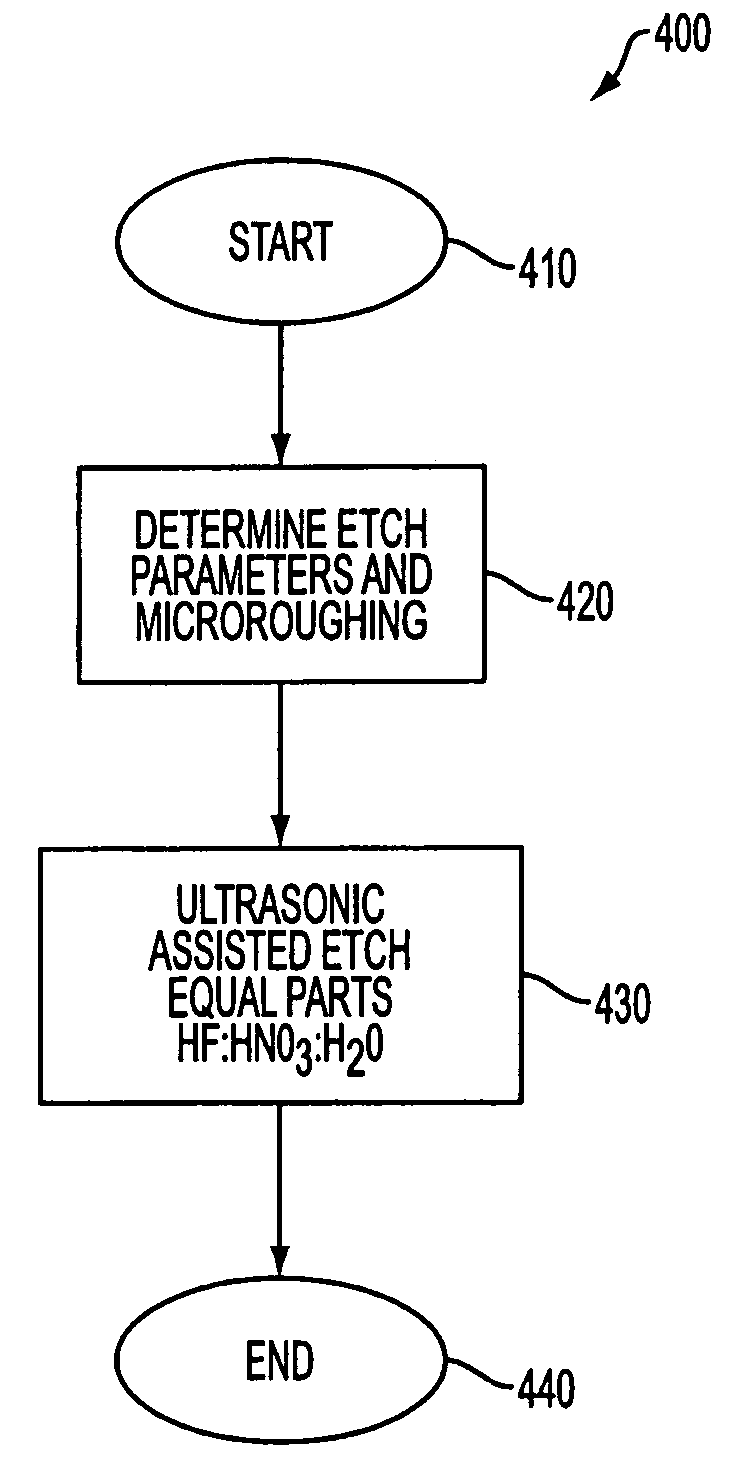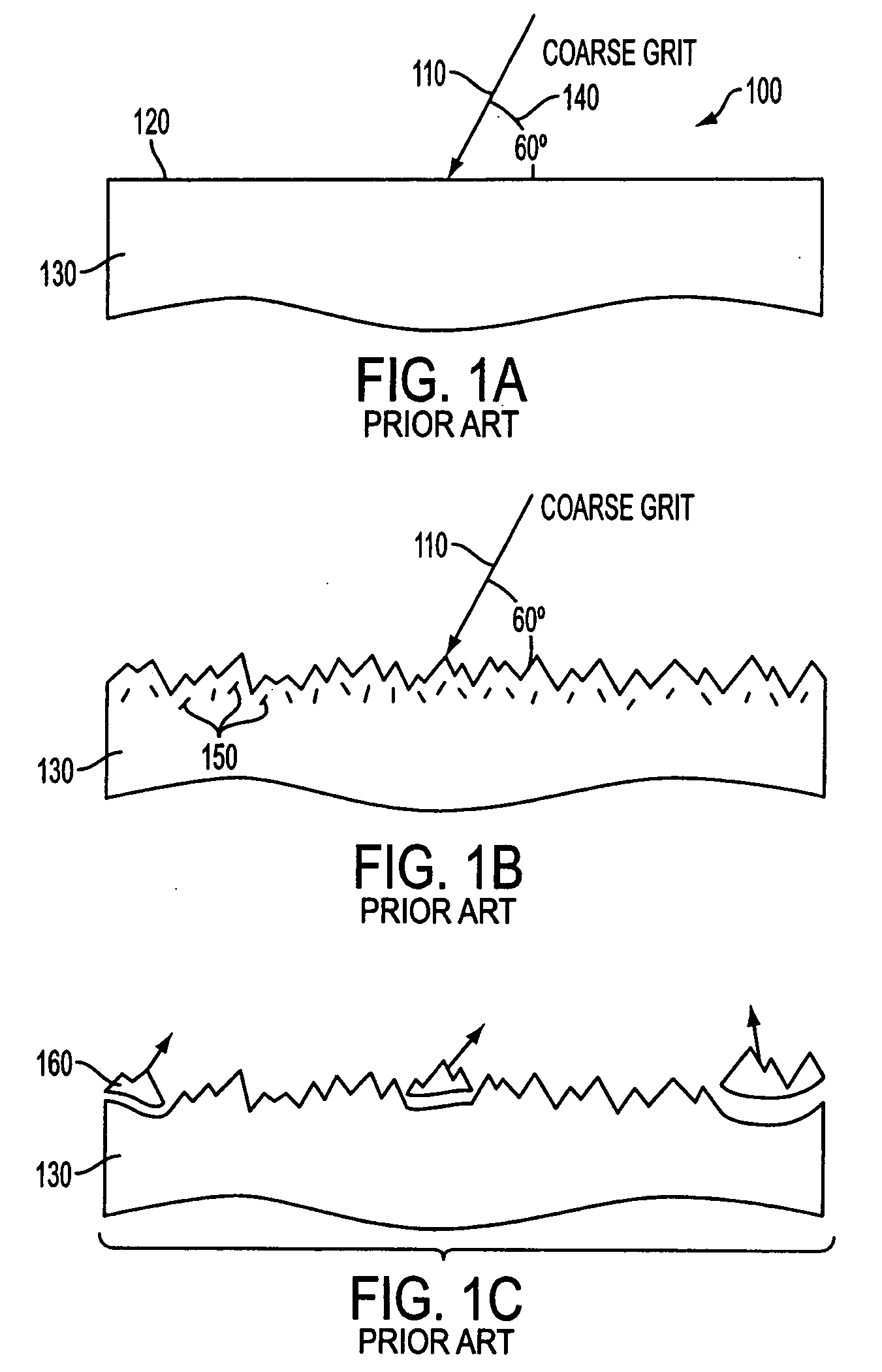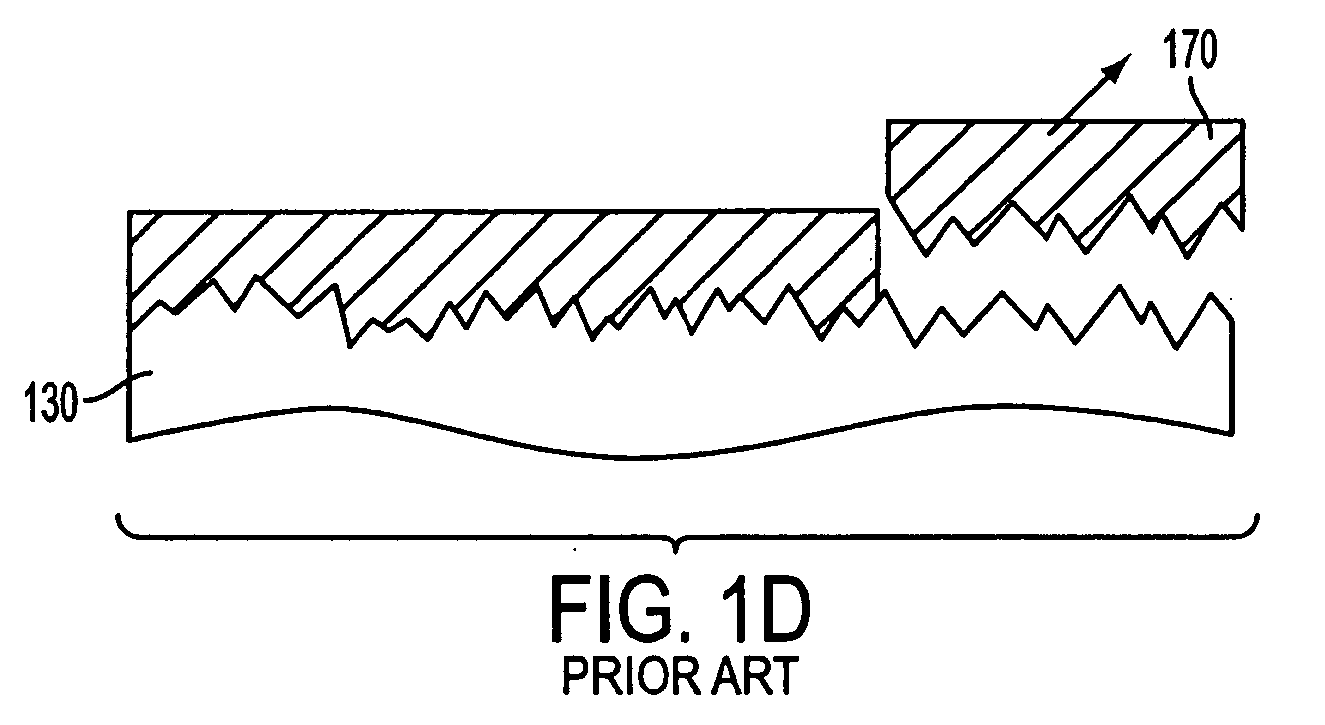Cleaning process and apparatus for silicate materials
a silicate material and cleaning process technology, applied in the direction of coatings, decorative arts, chemical vapor deposition coatings, etc., can solve the problems of reducing the “yield” of usable devices, loose particles of these polymers may break off, contaminating the wafer, etc., to reduce cracks, fractures and other defects, increase the stiction of contaminant layers, and increase surface area
- Summary
- Abstract
- Description
- Claims
- Application Information
AI Technical Summary
Benefits of technology
Problems solved by technology
Method used
Image
Examples
Embodiment Construction
[0032] Unless otherwise indicated, all technical and scientific terms used herein have the same meaning as they would to one skilled in the art of the present invention. It is to be understood that this invention is not limited to the particular methodology, protocols and reagents described, as these may vary. All publications and patents cited herein are expressly incorporated herein by reference for the purpose of describing and disclosing methodologies and devices with might be used in connection with the cleaning and micro-roughing processes and devices of the invention.
[0033] I. Definitions
[0034] By “micro-roughening” or “micro-roughness” is meant the root mean square of the short-range deviations of a surface above and below its mean position, and includes the way in which the micro-roughness is distributed at different spatial frequencies, or different sizes, of structure on the surface of interest. This is to be distinguished from isolated surface defects and contaminants ...
PUM
| Property | Measurement | Unit |
|---|---|---|
| angle | aaaaa | aaaaa |
| distance | aaaaa | aaaaa |
| distance | aaaaa | aaaaa |
Abstract
Description
Claims
Application Information
 Login to View More
Login to View More - R&D
- Intellectual Property
- Life Sciences
- Materials
- Tech Scout
- Unparalleled Data Quality
- Higher Quality Content
- 60% Fewer Hallucinations
Browse by: Latest US Patents, China's latest patents, Technical Efficacy Thesaurus, Application Domain, Technology Topic, Popular Technical Reports.
© 2025 PatSnap. All rights reserved.Legal|Privacy policy|Modern Slavery Act Transparency Statement|Sitemap|About US| Contact US: help@patsnap.com



